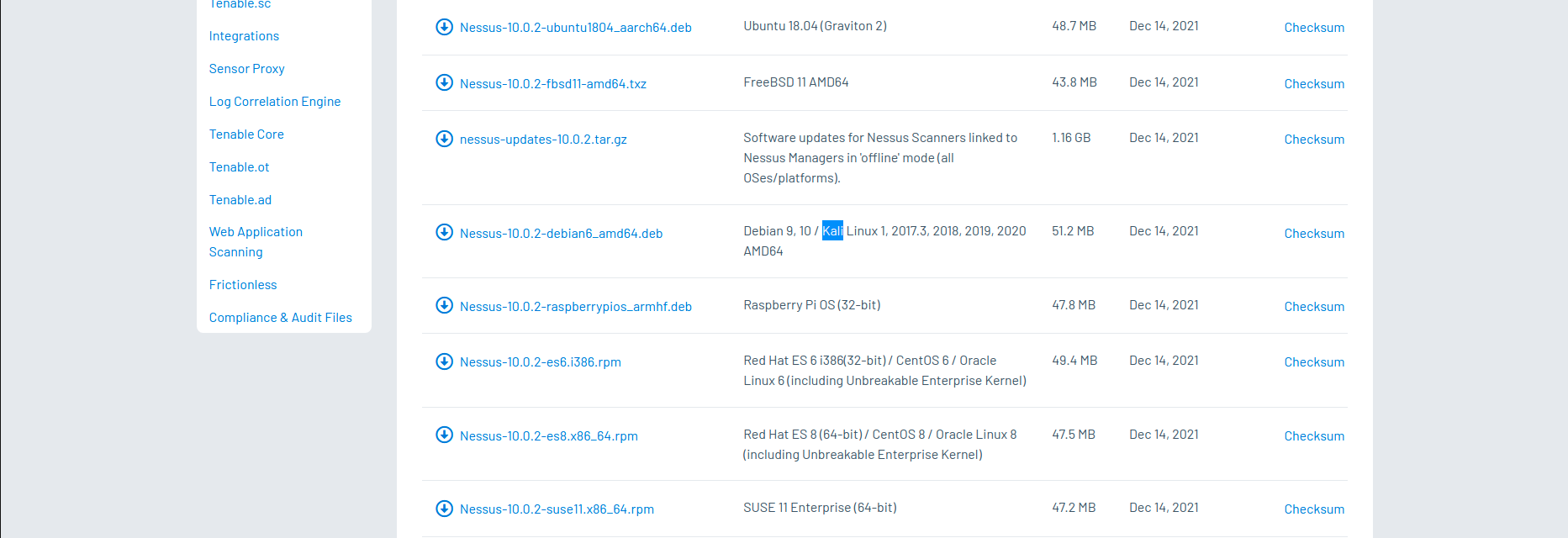Install & Configure Nessus on Kali Linux
Table of contents:
- What’s Nessus
- Download Source
- Install
- Enable && Start Services
- Web Interface
- CLI
- Vulnerability Scanning with Nessus
What’s Nessus
Nessus is a remote security scanning tool, which scans a computer and raises an alert if it discovers any vulnerabilities that malicious hackers could use to gain access to any computer you have connected to a network.
In this short tutorial I will show you how to install Nessus on Kali Linux …
Download Source
First update your system:
apt update && apt upgradeafter download package from here
Install
Installing from downloaded package:
sudo apt install ./Nessus-10.0.2-debian6_i386.debEnable && Start Services
Starting Nessus service:
/bin/systemctl start nessusd.serviceWeb Interface
CLI
Command line interface using the nessuscli utility allows the user to manage user accounts, modify advanced settings, manage digital certificates, report bugs, update Nessus, and fetch necessary license information.
All CLI commands must be run by a user with administrative privileges.
┌──(kali㉿kali)-[/opt/nessus/sbin]
└─$ sudo ./nessuscli help 130 ⨯
Usage: nessuscli <command> [<options>]
Usage: nessuscli <command> help
Bug Reporting Commands:
bug-report-generator
bug-report-generator --quiet [--full] [--scrub]
User Commands:
rmuser [username]
chpasswd [username]
adduser [username]
lsuser
Dump Commands:
dump --plugins
Fetch Commands:
fetch --register <serial>
fetch --register-offline <license.file>
fetch --check
fetch --code-in-use
fetch --challenge
fetch --security-center
fetch --scanner-health-stats
Node Commands:
node link --key=<key> --host=<host> --port=<port>
node unlink
node status
Fix Commands:
fix [--secure] --list
fix [--secure] --set <name=value>
fix [--secure] --get <name>
fix [--secure] --delete <name>
fix --show
fix --show <name>
fix --list-interfaces
fix --reset
Certificate Commands:
import-certs
mkcert-client
mkcert [-q]
Backup Tool:
backup --create <backup file filename>
backup --restore <backup file path>
Analyze Commands:
analyze scan <uuid>
Software Update Commands:
update
update --all
update --plugins-only
update <plugin archive>Vulnerability Scanning with Nessus
Nessus gives you the ability to configure your scan based on different scan and policy templates. These templates will determine the settings that will be found within the scan policy settings:
- Basic: With this setting, you can specify security-related and organizational aspects of the scan or policy, such as name of the scan, the targets of the scan, whether or not it is scheduled and who has access to it.
- Discovery: For defining the ports to be scanned and the methods to be used while conducting this discovery.
- Assessment: This setting allows you to determine the type of vulnerability scan to perform and how they are performed.
- Report: For determining how scan reports are generated and the information that should be included within them.
- Advanced: Here you will define scan efficiency and the operations that the scan should perform.
Reference:
- Install Nessus Essentials, Professional, or Manager
- Documentation
- Kali Linux Penetration Testing and Ethical Hacking Linux
- Downloads
- Modify a vulnerability’s severity
My site is free of ads and trackers. Was this post helpful to you? Why not




